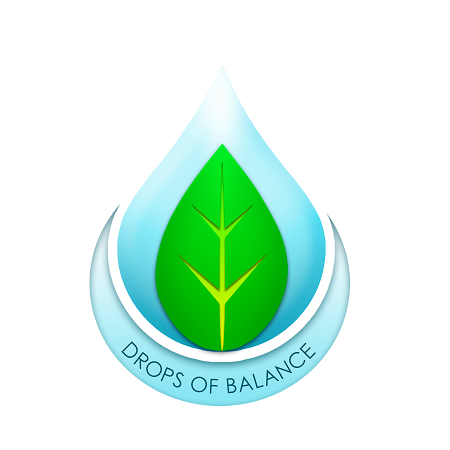
How to Improve Soil Health and Create Thriving Microbes (Easy Guide for Organic Gardeners)
Your garden's success starts beneath the surface. Healthy soil isn't just dirt: it's a living ecosystem teeming with billions of beneficial microorganisms that work around the clock to feed your plants, fight off diseases, and create the perfect growing conditions for everything from tomatoes to roses.
Most gardeners focus on what they can see above ground, but the real magic happens in the soil. When you learn how to improve soil health and create thriving microbe communities, you're essentially building a biological factory that produces healthier plants, better yields, and more resilient gardens.
Understanding Your Soil's Hidden Ecosystem
Soil microbes are the unsung heroes of organic gardening. These microscopic workers include bacteria, fungi, protozoa, and other organisms that break down organic matter, cycle nutrients, and protect plant roots from harmful pathogens. A single teaspoon of healthy soil contains more microorganisms than there are people on Earth.
These microbes form symbiotic relationships with plant roots, trading nutrients for sugars and other compounds plants produce through photosynthesis. When this relationship thrives, plants become naturally more resistant to pests and diseases while requiring fewer external inputs like fertilizers.
The key to supporting these beneficial microorganisms lies in understanding what they need: organic matter for food, proper moisture levels, adequate oxygen, and minimal disturbance. When you provide these conditions, soil microbes multiply rapidly and create the foundation for exceptional plant growth.
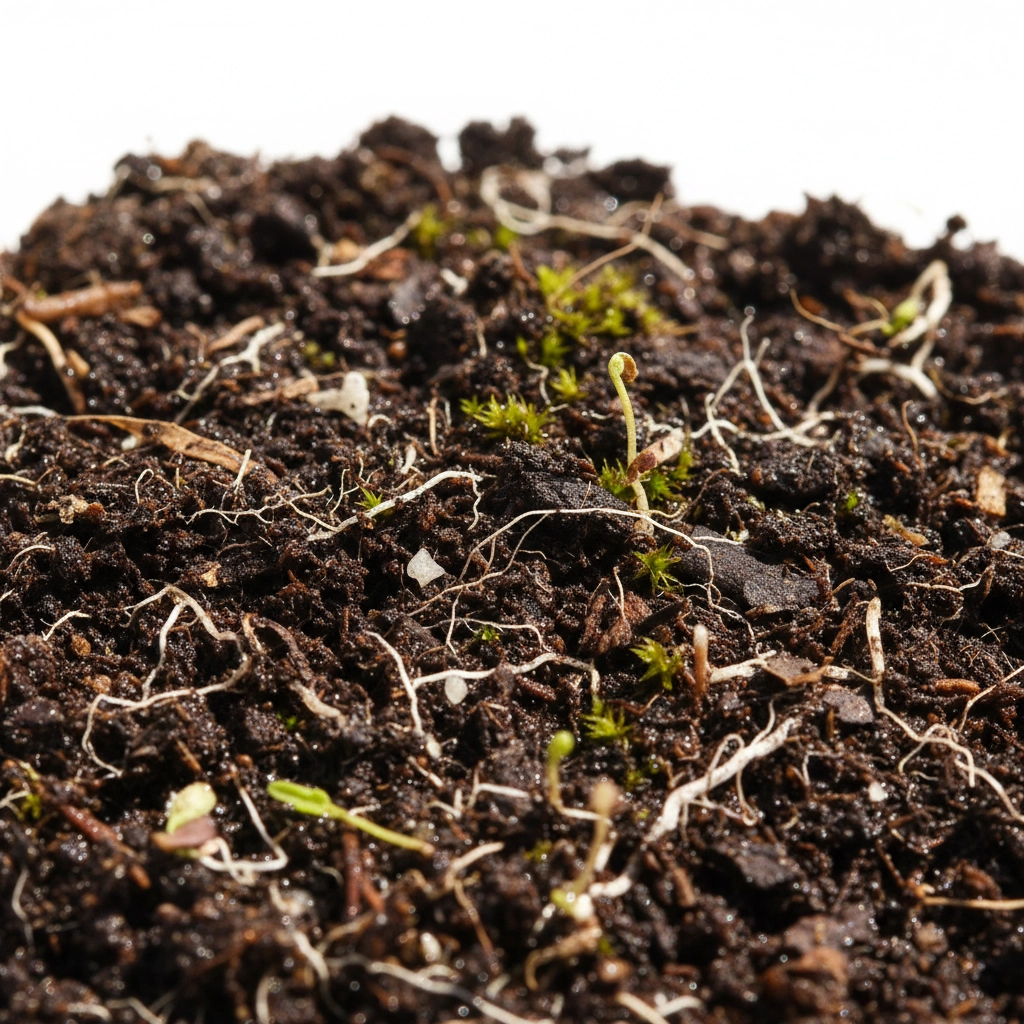
Essential Steps to Build Soil Health
Add Organic Matter Consistently
The most critical factor in how to improve soil health is increasing organic matter content. Compost serves as both food for microorganisms and a slow-release fertilizer for plants. Apply 2-3 inches of quality compost to your garden beds twice yearly: once in early spring and again in fall.
Beyond traditional compost, consider these organic garden soil amendment options:
- Well-aged animal manure
- Leaf mold from decomposed leaves
- Grass clippings (pesticide-free)
- Shredded bark mulch
- Kitchen scraps via composting systems
Each type of organic matter feeds different microbial communities, so diversity strengthens your soil ecosystem.
Protect Soil Structure
Healthy soil has good structure: a balance of solid particles, air spaces, and water. Compaction destroys this structure and suffocates beneficial microbes. Avoid walking on wet soil and create permanent pathways in your garden to minimize compaction.
Reduce tillage whenever possible. While occasional light cultivation can help incorporate amendments, excessive tilling disrupts fungal networks and destroys soil aggregates that took months or years to form. Instead, use broadfork tools to gently loosen compacted areas without mixing soil layers.
Maintain Consistent Moisture
Soil microbes need water to survive and reproduce, but they also require oxygen. The ideal soil moisture feels like a wrung-out sponge: moist but not waterlogged. Mulching around plants helps maintain consistent moisture while suppressing weeds and slowly decomposing to feed soil organisms.
Install drip irrigation or soaker hoses for consistent, gentle watering that penetrates deep into the soil rather than just wetting the surface.
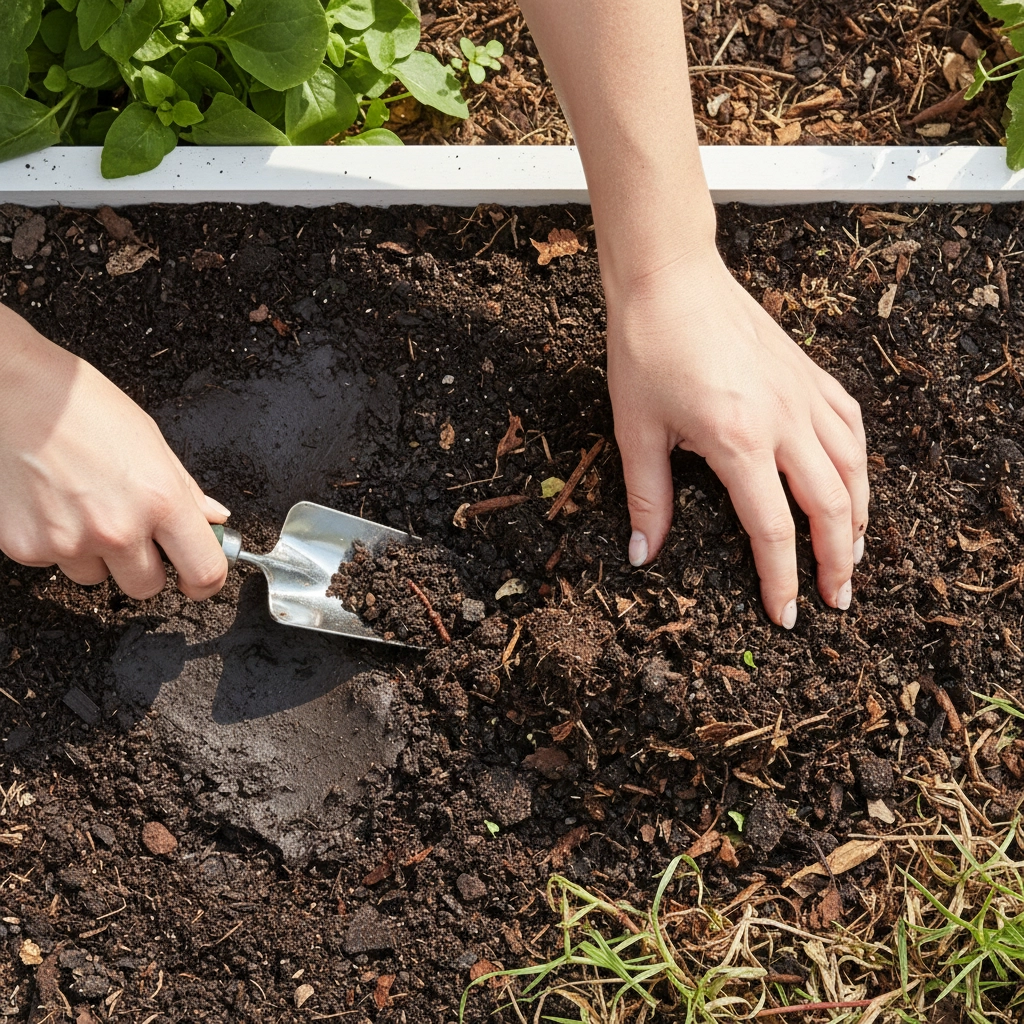
Creating Thriving Microbe Communities
Use Cover Crops and Living Mulches
Cover crops are living plants grown specifically to improve soil health rather than for harvest. They keep living roots in the soil year-round, continuously feeding microbes through root exudates. Popular cover crops for organic gardening include:
- Crimson clover (fixes nitrogen)
- Winter rye (adds organic matter)
- Buckwheat (accumulates phosphorus)
- Phacelia (attracts beneficial insects)
Plant cover crops in unused garden areas or between growing seasons. Even a simple mix of annual ryegrass and crimson clover can dramatically improve soil biology in just one season.
Diversify Your Plantings
Monocultures lead to imbalanced soil microbiology. Different plants support different microbial communities through their unique root exudates. Interplanting vegetables with herbs, flowers, and perennials creates a more diverse and resilient soil ecosystem.
Crop rotation also plays a crucial role in maintaining soil health. Follow heavy feeders like tomatoes and corn with nitrogen-fixing legumes, then follow those with root vegetables that help break up soil compaction.
Feed Microbes with Trace Minerals
While organic matter provides carbon for soil microbes, these organisms also need trace minerals to function properly. Many soils, especially those that have been conventionally farmed or heavily leached, lack essential trace minerals that support microbial activity.
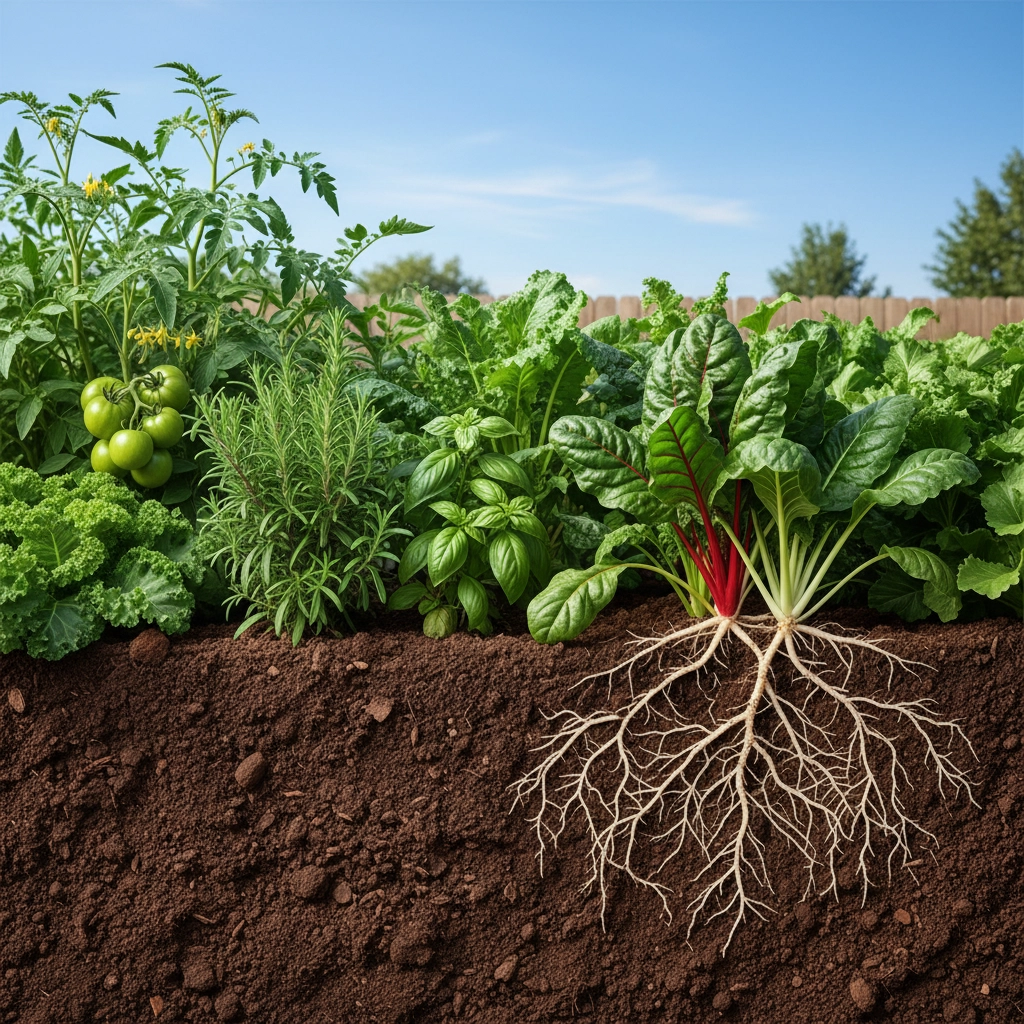
The Role of Water Quality in Soil Health
Your irrigation water quality significantly impacts soil microbe populations. Chlorinated tap water can kill beneficial bacteria and fungi, while fluoride and other chemical additives accumulate in soil over time, potentially harming plant roots and soil organisms.
Many organic gardeners overlook this critical factor. Even if you're doing everything else right: adding compost, using cover crops, avoiding chemicals: poor water quality can undermine your soil health efforts.
This is where water treatment becomes essential for serious organic gardeners. Removing harmful chemicals while adding beneficial trace minerals creates an environment where soil microbes can truly thrive.
How Drops of Balance Supports Soil Health
Drops of Balance offers a unique solution for organic gardeners serious about soil health. This concentrated mineral solution removes harmful chemicals like chlorine and fluoride from irrigation water while simultaneously adding essential trace minerals that support both plant growth and microbial activity.
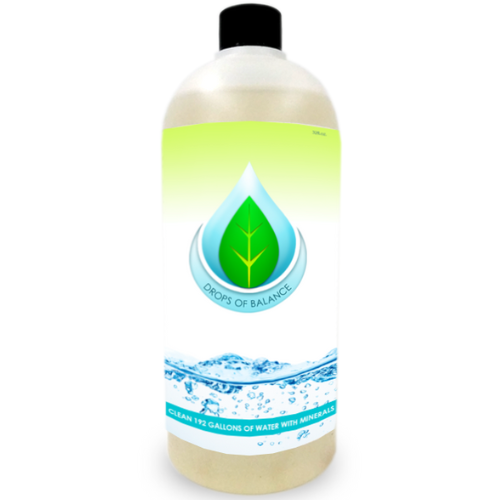
When you treat your irrigation water with Drops of Balance, you're accomplishing two goals:
- Protecting beneficial soil microbes from chemical damage
- Supplying trace minerals that many soils lack
The trace minerals in Drops of Balance include sulfur, magnesium, and other elements that serve as cofactors in enzymatic reactions within both plants and soil microorganisms. These minerals become particularly important in container gardening or areas with depleted soils.
For foliar feeding, mix 2ml of Drops of Balance per gallon of water and spray directly on plant leaves. This provides immediate mineral nutrition while the soil biology continues developing below ground.
Practical Implementation Schedule
Monthly Tasks
- Apply compost or other organic amendments
- Check soil moisture and adjust irrigation
- Observe plant health for signs of nutrient deficiency
Seasonal Actions
Spring: Add 2-3 inches of compost, plant cover crops in unused areas, start treating irrigation water with trace minerals
Summer: Maintain consistent moisture, mulch heavily, continue trace mineral water treatment
Fall: Add another layer of compost, plant winter cover crops, collect and compost fall leaves
Winter: Plan next year's crop rotations, order organic amendments, maintain cover crop areas
Weekly Monitoring
Check soil moisture levels and adjust irrigation accordingly. Healthy soil should maintain moisture without becoming waterlogged. Watch for signs that your soil biology is improving: earthworm activity, better water infiltration, and stronger plant growth.
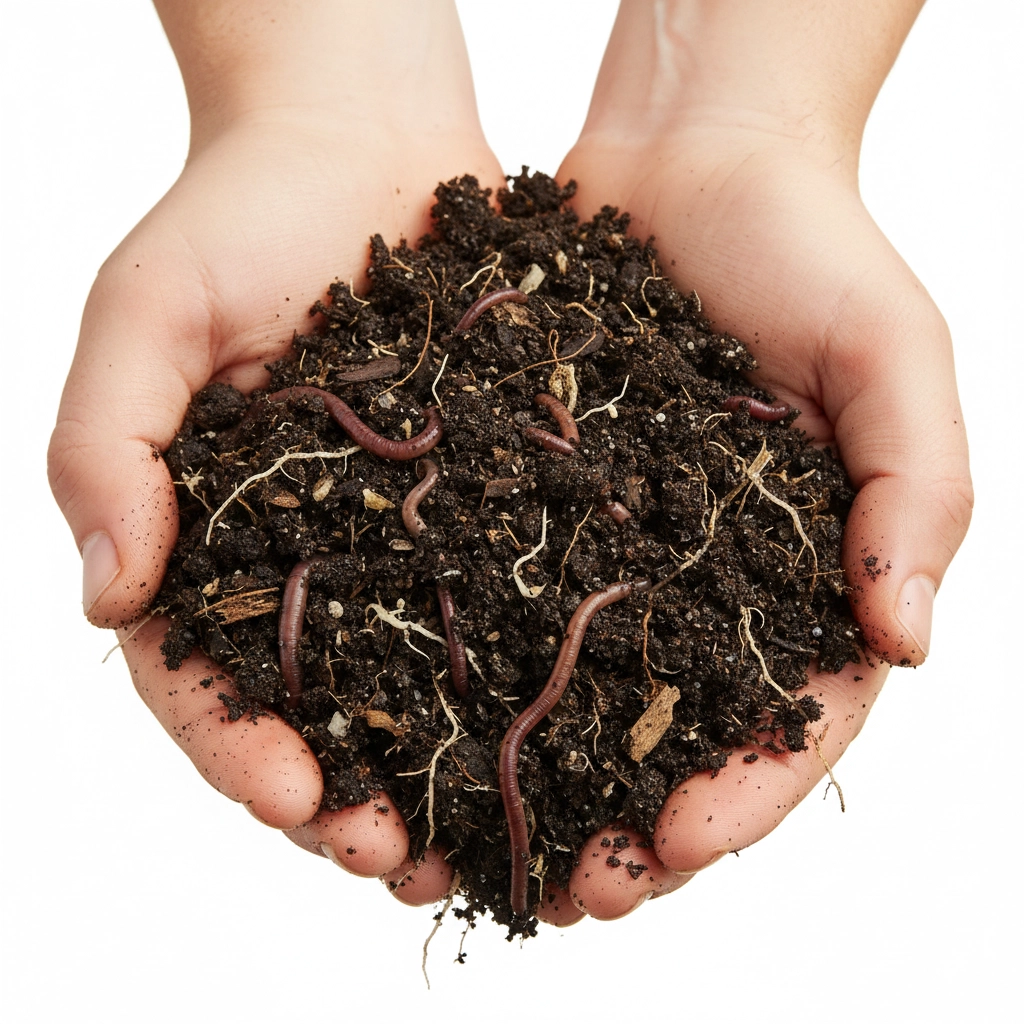
Measuring Your Success
Healthy soil with thriving microbe populations shows measurable improvements:
- Increased earthworm activity
- Better water infiltration and retention
- Improved plant vigor and disease resistance
- Richer, darker soil color
- Pleasant earthy smell when soil is disturbed
- Stronger root systems on plants
Professional soil tests can measure organic matter percentage, but simple visual and tactile observations often tell the story just as well. Soil that forms stable aggregates when squeezed, supports diverse plant life, and teams with beneficial insects indicates a thriving ecosystem.
The investment in building soil health pays dividends for years. Healthy soil requires fewer inputs, produces better yields, and becomes more resilient to weather extremes. By focusing on feeding the soil rather than just feeding plants, you create a self-sustaining system that improves with each growing season.
Start with one or two practices that fit your current situation: perhaps adding compost and treating your irrigation water. As you see results, gradually incorporate additional soil health practices. Your plants, your microbes, and your garden's long-term productivity will thank you.
